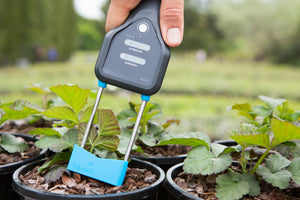Powdery Mildew May Be Your Arch-Nemesis!
Powdery mildew is a major challenge for both global food producers and small-scale gardeners. There are several ways to reduce your risk of becoming a victim of this pesky mildew.
Prevention is Your Best Tool
First and foremost, prevention is key. As the saying goes, “An ounce of prevention is worth a pound of cure”. Once it is in your environment, it is very difficult to eradicate. Taking preventative measures will help to mitigate risk and potentially save your garden from infestation.
Weather Resistant
Powdery mildew spores are very hardy and weather resistant. They can even survive throughout the winter. Carefully screen any plants before bringing outdoor plants indoors for the colder season or when integrating new plants into your grow. Examine both sides of the leaves, fruits, and stems. If you have space, consider creating a ‘quarantine’ area where you can put new plants for the first few weeks. This may seem like a drastic step but consider that eradicating powdery mildew can be a significant amount of work.
Host Specific
One thing to keep in mind, powdery mildew is host-specific. For example, a tomato plant that has been infected with powdery mildew that is directly touching a strawberry plant could result in the strawberry plant being unaffected. If the infected tomato plant were to come in contact with a neighboring tomato plant, it would most likely spread to the neighboring plant.
Powdery Mildew Treatments and Sprays
Anti-Fungal
Another great preventative measure is to use a quality anti-fungal treatment. Once you begin to see the visible signs of powdery mildew—fluffy white spots—the infection will begin spreading at a rapid pace. Silica is known to have many benefits. One of them is a helpful anti-fungal property that also helps to create a barrier, making it more difficult for pests to attack your plants. Some of our favorite anti-mildew sprays are Serenade, SaferGro Mildew Cure, Athena Mildew Control, Regalia Biofungicide, and Safer Garden Fungicide Concentrate. Make sure to apply the treatment to the entire plant, including the undersides of the leaves, and apply regularly. If you are not experiencing any signs of mildew, it is still recommended to treat your plants once a week as a precaution.
DIY
Using a dilution of baking soda as a “DIY” cure has proven to be effective for small outbreaks, but can cause problems if not mixed and applied properly. If you’re in an indoor area, you can consider using a sulfur burner to rid your plants of powdery mildew. However, this can have long-lasting effects on the taste of food crops and is not recommended.
Powdery Mildew Invades!
If you begin to see signs of an infection, it is best to move quickly. Trim off any infected areas, making sure not to shake or disturb the plants. You want to minimize spore release! Take the affected pieces that you remove and place them in a sealed bag to remove them from the garden. Next, apply a foliar spray as described above. You will want to increase the frequency of application to once every 3-4 days. Keep a very close eye on your plants in the following weeks. Powdery mildew thrives in shady areas, so check every branch and leaf. For some plants, increasing your frequency of application can prove difficult due to stages of flowering or fruiting, as excess moisture can cause mold to grow in the flowers. Make sure you have proper air circulation and ventilation in place to reduce the risk of mold.
Understanding Powdery Mildew Treatments
Many powdery mildew treatments work by raising the pH of the plant surfaces. This is effective since powdery mildew can’t survive on surfaces that have a reading above a pH of 8.
Larger infections may require additional measures to rid your grow of powdery mildew and prevent future outbreaks. Keep a look out for our next post that will cover more advanced control methods for your grow.
As usual, keep your garden clean at all times.
